Who was J. Robert Oppenheimer? What to know about atomic bomb physicist's life, career, death
- Oops!Something went wrong.Please try again later.
- Oops!Something went wrong.Please try again later.
- Oops!Something went wrong.Please try again later.
The hype is building for Christopher Nolan’s "Oppenheimer," which premieres on July 21st. The film boasts an A-list cast and comes from the director responsible for "The Dark Knight," "Inception" and "Memento."
Based on the novel, "American Prometheus: The Triumph and Tragedy of J. Robert Oppenheimer," the film follows the story of Julius Robert Oppenheimer (played by Cillian Murphy) a theoretical physicist and director of the laboratory responsible for the development of the atomic bomb.
But for those unfamiliar with atomic history (or maybe those more familiar with the characters in the upcoming "Barbie" movie, instead), here’s what to know about the man on which the film is based, J. Robert Oppenheimer, the “father of the atomic bomb.”
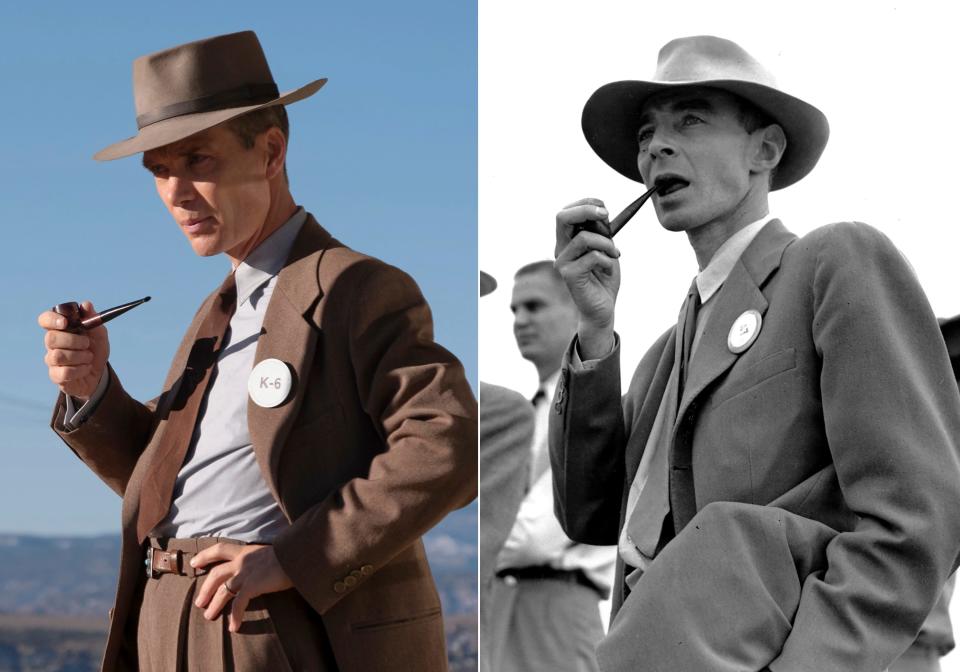
'Oppenheimer': Christopher Nolan made his new movie because he thought he'd die in a nuclear Armageddon
Where was Oppenheimer born?
Oppenheimer was born in New York, in 1904 to German immigrant and wealthy textile importer, Julius Oppenheimer and painter Ella Friedman Oppenheimer, according to the National Parks Service, which described him as a quiet child, studying mineralogy and writing poetry.
Where did Oppenheimer go to college?
Oppenheimer was admitted to Harvard University but postponed his enrollment due to illness, according to the National Museum of Nuclear Science & History.
After enrolling in 1922, he studied physics, chemistry, Latin, Greek and eastern philosophy at Harvard before traveling to the University of Cambridge where he studied two terms, per the school. He then transferred to the University of Göttingen where he earned a doctorate in physics, according to the nuclear museum.
The 'Barbenheimer’ phenomenon: How a movie meme inspired the 'weird' double feature
He then returned to the United States to teach physics at the University of California at Berkeley and the California Institute of Technology. There he conducted research on black holes and neutron stars. He worked alongside experimental physicist and Noble Prize winner Ernest Lawrence, played by Josh Hartnett in the film.
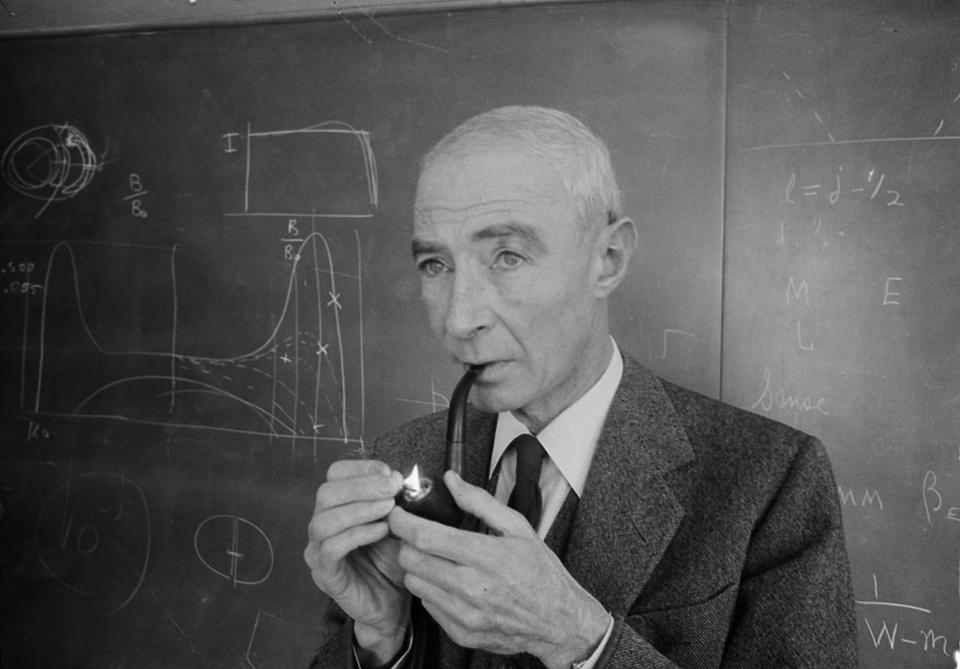
Oppenheimer's wife, children
He married Katherine “Kitty” Puening (played by Emily Blunt in the upcoming movie) in 1940 and had two children, Peter and Toni, according to the National Museum of Nuclear Science & History.
Exclusive footage: Why Christopher Nolan's 'Oppenheimer' is 'the most important story of our time'
What role did Oppenheimer serve in the Manhattan Project? What was Los Alamos?
Los Alamos Scientific Laboratory in New Mexico, a key location in the "Oppenheimer" movie, was a lab responsible for the top-secret design and production of atomic bombs. Part of the Manhattan Project, Los Alamos (or Project Y as it was known at the time) was greenlit in 1942, according to the U.S. Department of Energy. It was then that General Leslie Groves, director of the Manhattan Project (played by Matt Damon), selected Oppenheimer to lead the project, and the pair began planning.
They selected a remote location surrounded by mountains to build a secret town where scientists and their families could live, according to the National Parks Service. There, hundreds of scientists and engineers developed the Gadget (the world’s first nuclear test device), Little Boy (the uranium-fueled atomic bomb dropped on Hiroshima, Japan), and Fat Man (the plutonium-fueled atomic bomb dropped on Nagasaki, Japan).
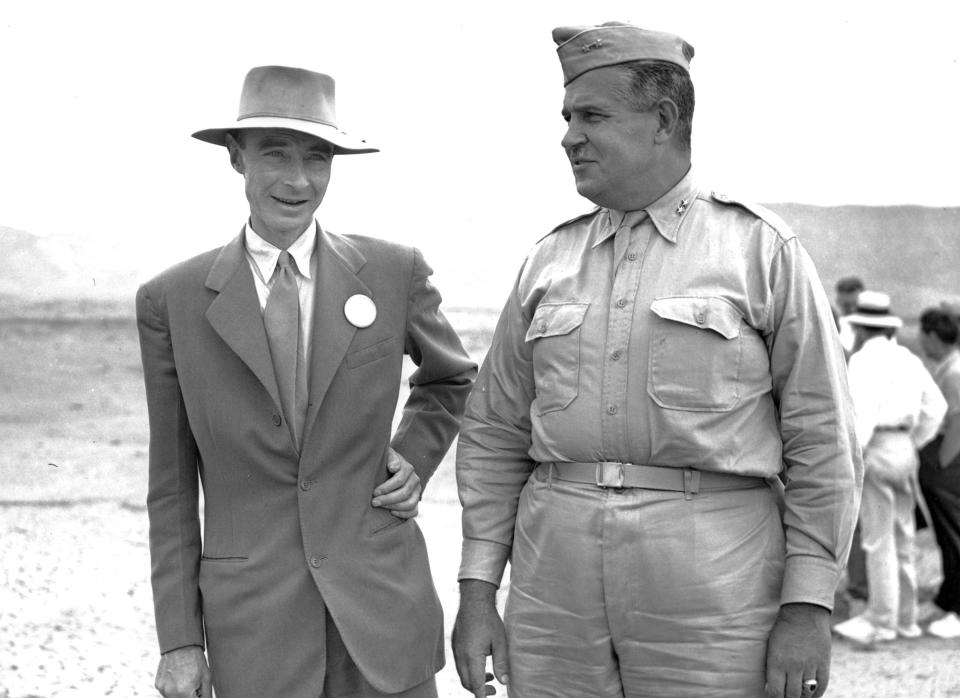
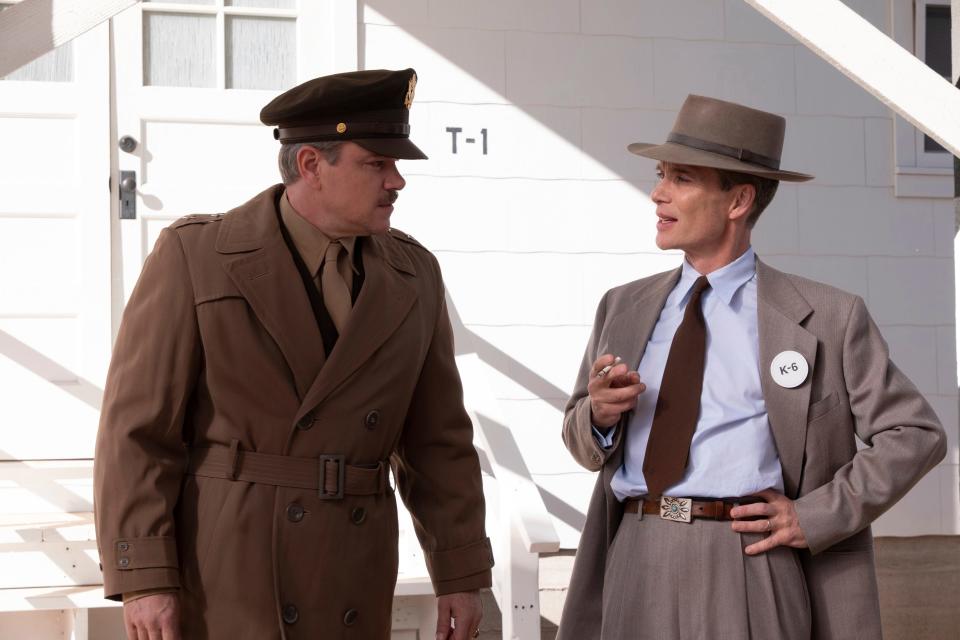
Robert Downey Jr.: 'Oppenheimer' invites dialogue about nuclear weapons
The Oppenheimer hearing
In 1954, during the era of McCarthyism, the Atomic Energy Commission called Oppenheimer to testify on his past involvement with communist organizations, due to fears that he was a Soviet spy.
It is unclear if Oppenheimer was ever a part of the Communist Party, but he was sympathetic to communist goals, according to the Atomic Heritage Foundation's nuclear museum. He became acquainted with leftist politics through his turbulent love affair with communist and medical student Jean Tatlock (played by Florence Pugh in the film) and was fueled by anger toward the oppression his Jewish relatives were suffering in Nazi Germany. Oppenheimer’s brother, Frank Oppenheimer, joined the Communist Party in 1937.
Oppenheimer’s communist ties were scrutinized when he was selected to partake in the Manhattan Project, but he was approved with the support of General Groves, the museum notes.
Oppenheimer testified for 27 hours in 1954 to the Atomic Energy Commission (AEC) according to the National Museum of Nuclear Science & History. In the end, his security clearance was revoked.
Sixty years after his hearing, the U.S. Department of Energy released the full, declassified transcript of the hearing.
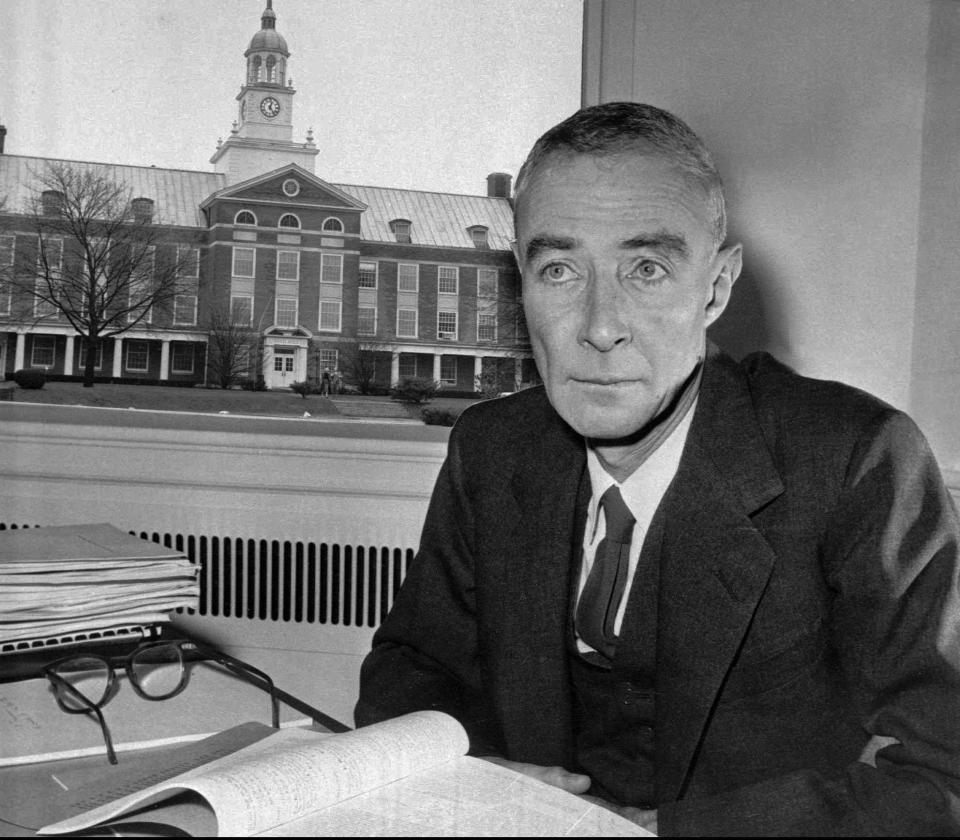
Oppenheimer: Hydrogen bombs vs. atomic bombs
After the Soviet Union successfully tested nuclear weaponry in 1949 and U.S. turned attention to advancing its nuclear arms, Oppenheimer resisted the development of fusion weapons (like the hydrogen bomb) instead of fission weapons (like the atomic bomb) for concerns that the weapons would only be used on human populations, according to the National Museum of Nuclear Science & History.
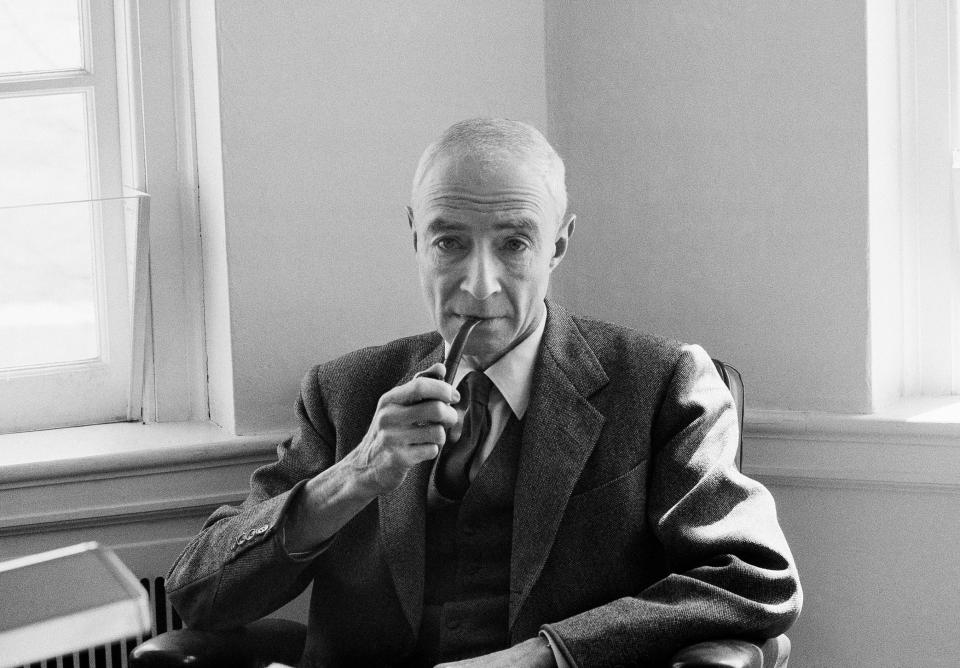
J. Robert Oppenheimer death
In 1967, Oppenheimer died in Princeton, New Jersey, of throat cancer, according to the National Museum of Nuclear Science & History.
More: Exclusive: Christopher Nolan's 'Oppenheimer' tackles a seminal moment in history
What to know about other 'Oppenheimer' characters in real life
Leslie Groves Jr.: Played by Matt Damon in the film, Groves was appointed to head the Manhattan Project in 1942 and worked alongside Oppenheimer. He was reportedly known for his stubbornness, egotism, intelligence, and abrasive nature, according to the National Museum of Nuclear Science & History. He fiercely defended Oppenheimer during the AEC hearing.
Jean Tatlock: Played by Florence Pugh in the film, Jean Tatlock (1914-1944) was an American psychologist and Communist Party member. For several years, she maintained a relationship with Oppenheimer, who she met while studying at the Stanford University Medical School. Oppenheimer proposed to Tatlock twice, although she declined both times, according to the nuclear museum.
Katherine “Kitty” Oppenheimer: Played by Emily Blunt, “Kitty” Oppenheimer married J. Robert Oppenheimer in 1939. She was a trained botanist forced to put her career on hold when moving to Los Alamos with her husband. She served as an important confidant for Oppenheimer, per the museum.
Lewis Strauss: Played by Robert Downey Jr in the film, Lewis Strauss was appointed chairman of the AEC by President Truman. He led the push for the development of thermonuclear weapons after the Soviets tested their first atomic bomb. He was a vocal opponent of Oppenheimer, as the two disagreed starkly on nuclear weapons and Strauss viewed Oppenheimer as a threat to American security, the museum notes.
This article originally appeared on USA TODAY: J. Robert Oppenheimer: Death, children, wife, atomic bomb role, trials

